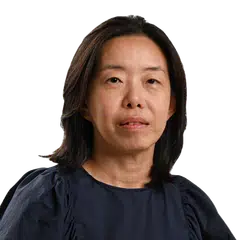‘Heading straight towards death’: South Korean patients urge doctors to end prolonged strike
Sign up now: Get insights on Asia's fast-moving developments
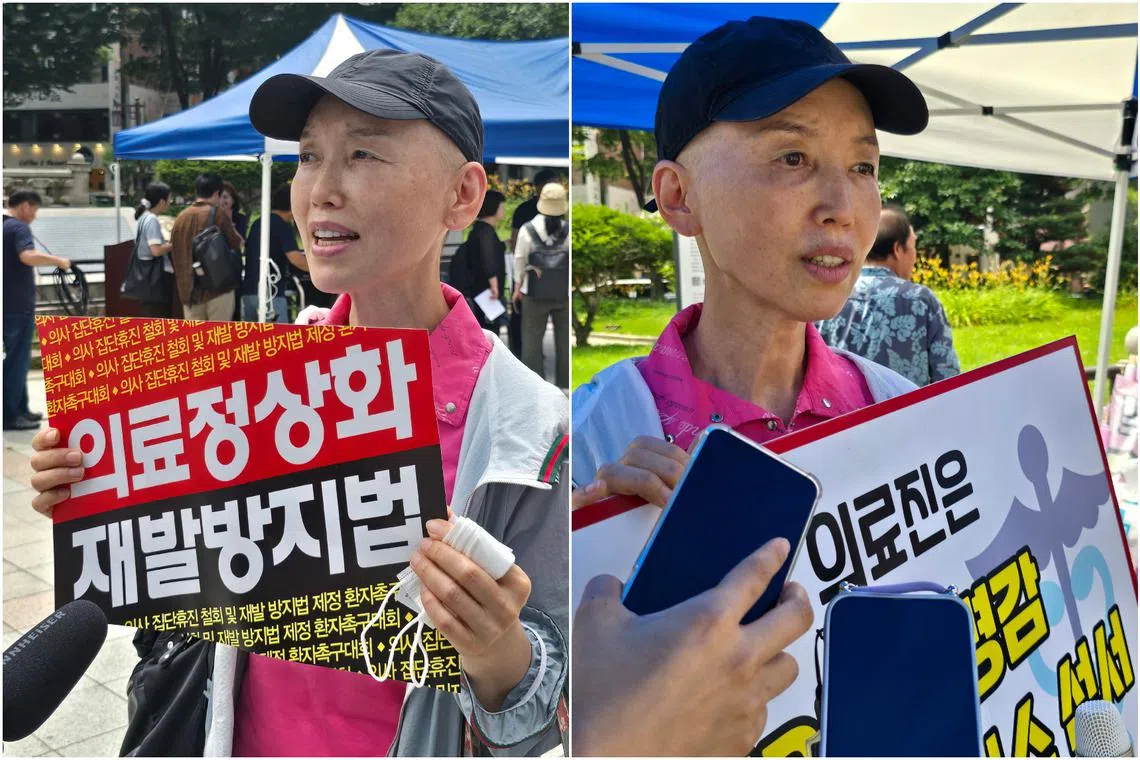
Madam Lisa Kim is a stage four pancreatic cancer patient who was diagnosed just a week before South Korean trainee doctors staged a mass walkout in late February.
ST PHOTO: WENDY TEO
Follow topic:
SEOUL - Just a week before South Korean trainee doctors staged a mass walkout on Feb 20,
A CT scan showed severe liver abscesses and an ominous mass on her pancreas. She was diagnosed with stage four pancreatic cancer which had already spread to her lungs, liver, thyroid and peritoneum. Doctors told her she had only a 1 per cent survival rate. It was grim news.
“I had so many questions in my head. The emotions I felt were so overwhelming that I felt like I was heading straight towards death,” she told The Straits Times on the sidelines of a July 4 rally urging physicians to halt the four-month-long strike.
Braving the sweltering summer heat and despite her frail condition, the 61-year-old joined some 300 others, including patients, their families and patient advocacy groups, to stage the rally in central Seoul.
The diagnosis earlier this year was “extremely frightening, difficult and despairing”, said Madam Kim, who was also due to be hospitalised for a follow-up treatment later that afternoon after the rally.
And to add to the stress of the sudden diagnosis, medical services and her treatment were also affected after thousands of trainee doctors stopped work indefinitely in protest against government plans to increase the number of medical student slots by 2,000 from 2025.
The figure was later revised to 1,500 amid mounting pressure.
The July 4 protesters also called for the government and the National Assembly to enact legislation to ensure that essential medical services are uninterrupted in the event of future strikes by the medical community.
The doctors’ strike and the resulting manpower crunch has meant that Madam Kim’s usual weekly hospital visits are now reduced to once a fortnight, or even delayed for a few days.
The lack of medical staff and time slots also causes her inconvenience, and she is unable to have all her necessary cancer monitoring scans and checks done at the same hospital. Instead, she must visit clinics in different locations to have them done.
Several of Seoul’s biggest hospitals, including the Asan Medical Centre, which Madam Kim is a patient of, also began reducing the amount of medical services provided, affecting surgeries, appointments and outpatient treatment.
On the same day as the protest, Asan Medical Centre said it started cutting back on its medical services offered by an estimated 30 per cent.
In a statement, the hospital blamed the government for the state of matters, and predicted that a medical collapse would be imminent if a resolution is not reached.
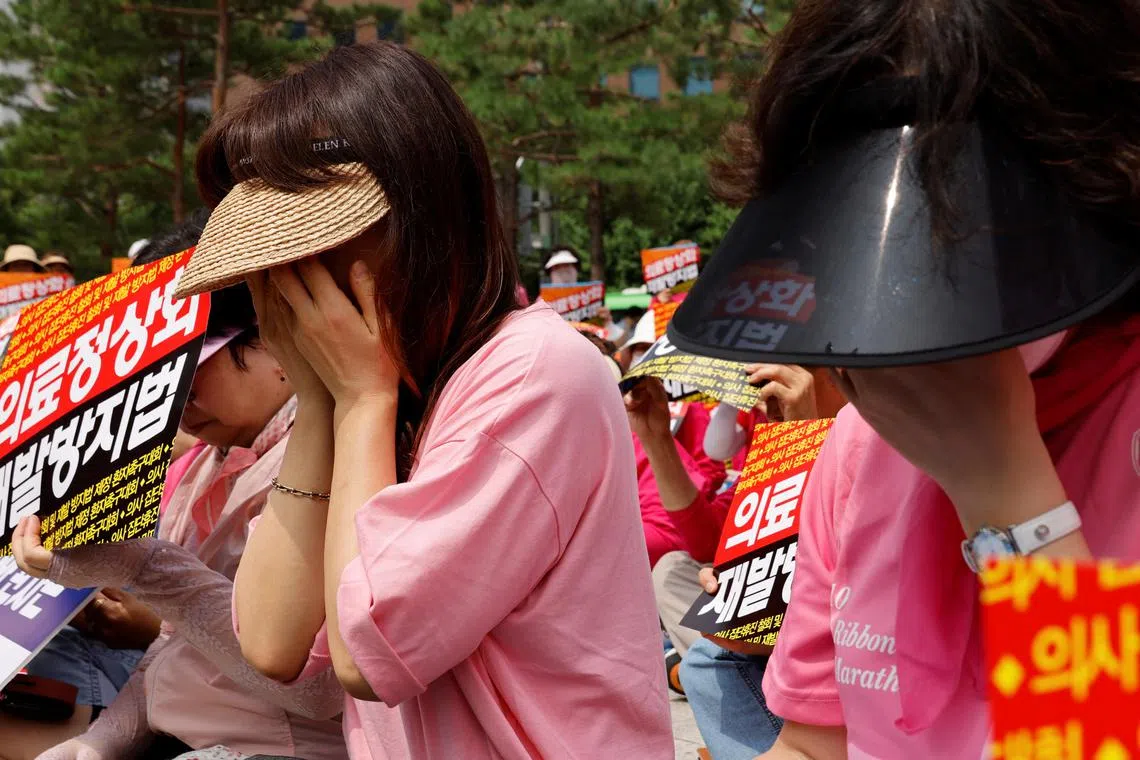
Protesters reacting during a rally against the prolonged doctors’ strike in response to the government’s plans to increase medical school admissions in Seoul, South Korea, July 4.
PHOTO: REUTERS
In June, two other major Seoul hospitals also cut down on their medical services, with two smaller hospitals set to follow suit later in July.
The reduction in medical services comes as medical professors,
While the government insists an increase in doctors is necessary to meet a rapidly ageing population, doctors say the issue lies in poor distribution of doctors across the different specialisations, and also between the cities and provinces.
Talks between the government and the medical community have stalled, and trainee doctors have yet to heed the government’s repeated calls to return to work.
During the July 4 protest, a breast cancer relapse patient, Madam Kang Hyun-young, 73, began weeping midway through the rally.
“When doctors are not in their rightful places, patients feel very stressed. We are all crying today because we feel the pain as a patient, or as the parent of a patient,” said Madam Kang, noting that while her treatment was not affected, she believed strongly in the call for striking doctors to return to work.
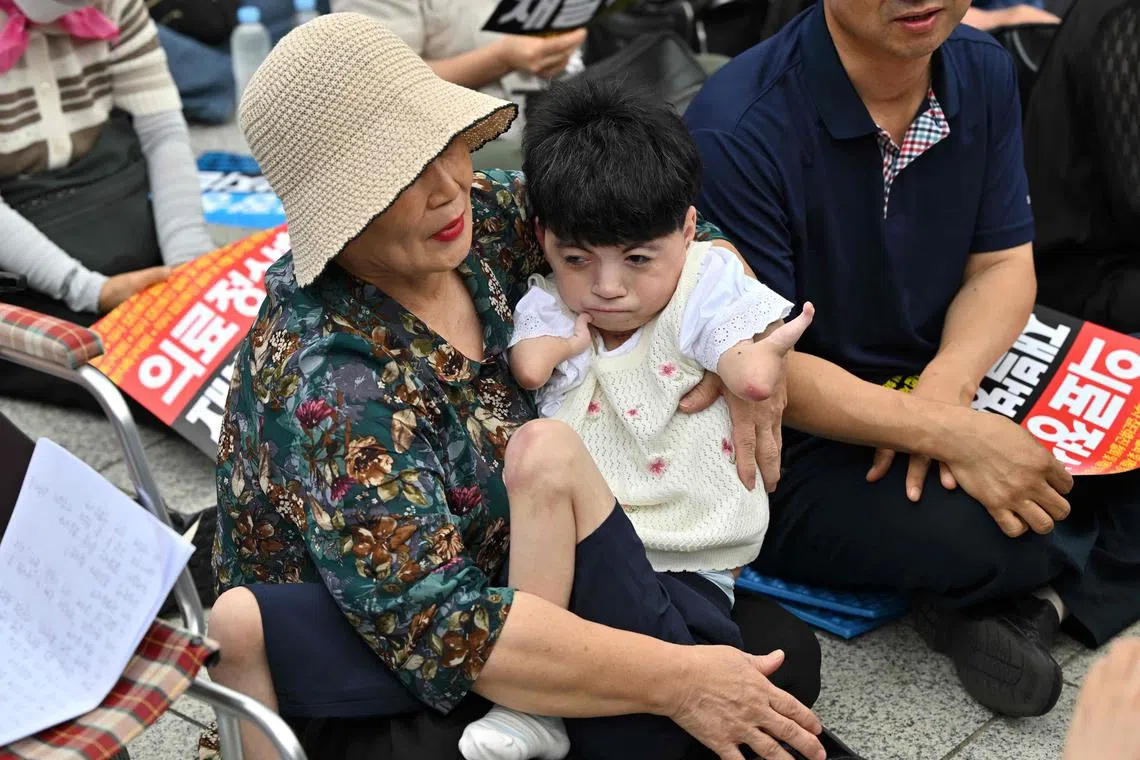
Miss Park Ha-eun, a 23-year-old South Korean patient with Cornelia de Lange Syndrome, being carried by her mother Kim Jeong-ae, at a rally against doctors’ strike in Seoul on July 4.
PHOTO: AFP
She had been diagnosed with cancer on her right breast 13 years ago and recovered after treatment. But the cancer returned on her left breast late in 2023. She has undergone chemotherapy and radiation therapy, and is currently receiving post-mastectomy treatment.
Farmer Kim Jeong-ae, 68, had turned up at the rally with her adopted and severely disabled daughter Park Ha-eun, who suffers from Cornelia de Lange Syndrome, a genetic disorder that causes developmental and cognitive issues. The 23-year-old also has frequent medical emergencies that require immediate access to medical help, said Madam Kim.
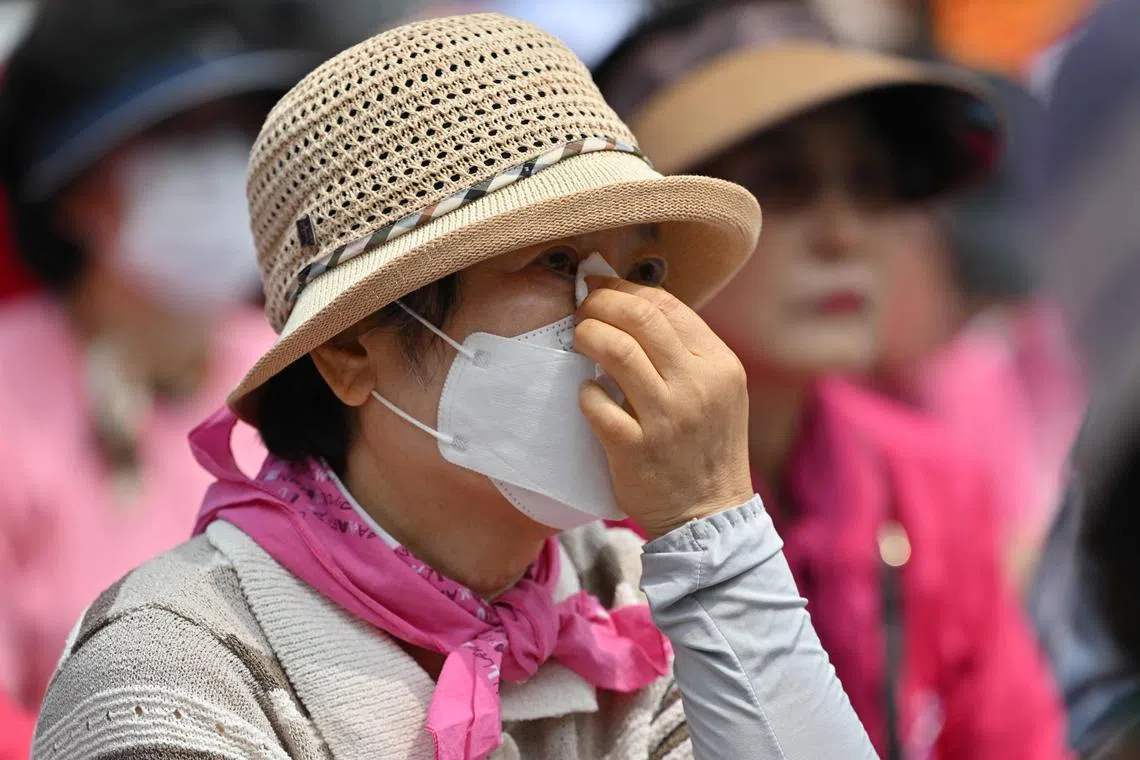
A member of South Korean patient advocacy groups tearing up during a rally against a doctors’ strike, in Seoul on July 4.
PHOTO: AFP
Addressing the crowd at the rally, Madam Kim, who had shaven her head in protest of the stand-off between doctors and the government, said: “It has been nearly five months since the conflict began. To patients and their families, these five months have felt like 50 years.
“Every day, I live in fear of losing my daughter – that she might not receive treatment and that we will have to say our goodbyes.”
The mother-daughter duo had travelled about two hours from their home in South Chuncheong province to the capital. It was their first time participating in a rally.
“The people will judge what is right and wrong. We are neither on the government’s side nor the doctors’ side. We simply want an environment where we can receive treatment without worries when we are sick,” said Madam Kim.

